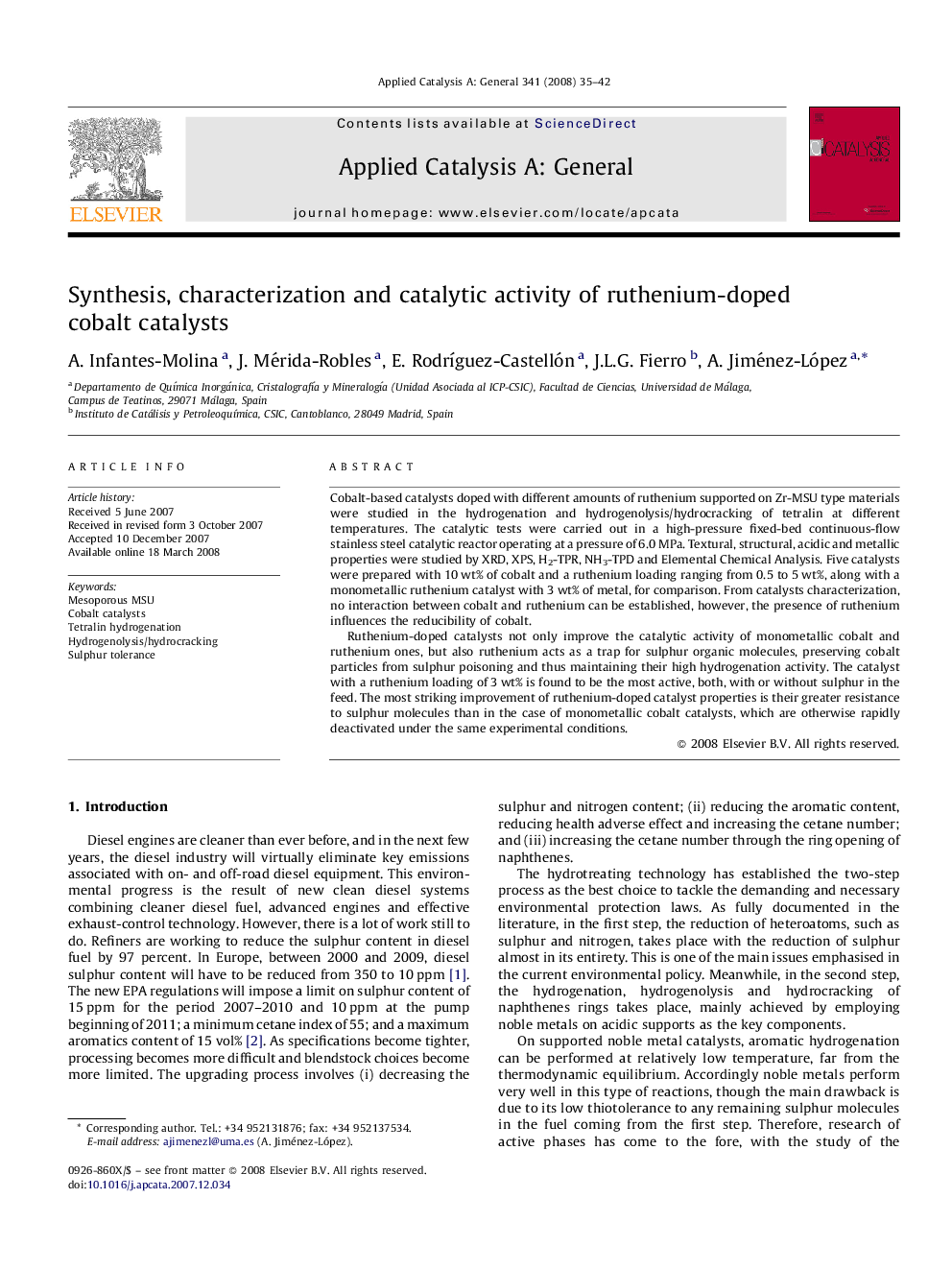| کد مقاله | کد نشریه | سال انتشار | مقاله انگلیسی | نسخه تمام متن |
|---|---|---|---|---|
| 43754 | 45987 | 2008 | 8 صفحه PDF | دانلود رایگان |

Cobalt-based catalysts doped with different amounts of ruthenium supported on Zr-MSU type materials were studied in the hydrogenation and hydrogenolysis/hydrocracking of tetralin at different temperatures. The catalytic tests were carried out in a high-pressure fixed-bed continuous-flow stainless steel catalytic reactor operating at a pressure of 6.0 MPa. Textural, structural, acidic and metallic properties were studied by XRD, XPS, H2-TPR, NH3-TPD and Elemental Chemical Analysis. Five catalysts were prepared with 10 wt% of cobalt and a ruthenium loading ranging from 0.5 to 5 wt%, along with a monometallic ruthenium catalyst with 3 wt% of metal, for comparison. From catalysts characterization, no interaction between cobalt and ruthenium can be established, however, the presence of ruthenium influences the reducibility of cobalt.Ruthenium-doped catalysts not only improve the catalytic activity of monometallic cobalt and ruthenium ones, but also ruthenium acts as a trap for sulphur organic molecules, preserving cobalt particles from sulphur poisoning and thus maintaining their high hydrogenation activity. The catalyst with a ruthenium loading of 3 wt% is found to be the most active, both, with or without sulphur in the feed. The most striking improvement of ruthenium-doped catalyst properties is their greater resistance to sulphur molecules than in the case of monometallic cobalt catalysts, which are otherwise rapidly deactivated under the same experimental conditions.
Hydrogenation, hydrogenolysis/hydrocracking of tetralin on supported cobalt-ruthenium bimetallic catalysts were evaluated. Catalysts with different loadings of ruthenium were tested at different temperatures and under the presence of dibenzothiophene. Ruthenium-doped catalysts improved the catalytic results previously obtained with a monometallic cobalt catalyst when dibenzothiophene was added to the feed as sulphur poison, due to ruthenium particle acting as sulphur trap.Figure optionsDownload as PowerPoint slide
Journal: Applied Catalysis A: General - Volume 341, Issues 1–2, 15 June 2008, Pages 35–42